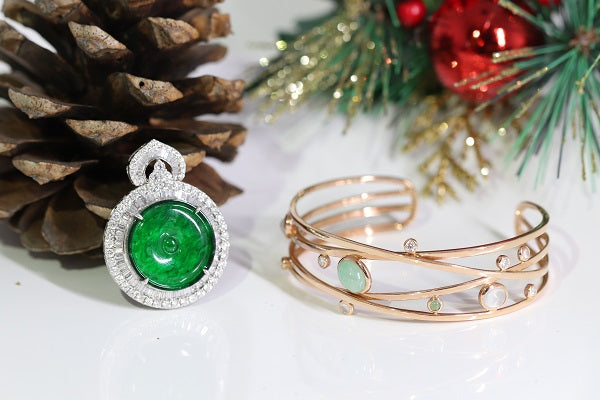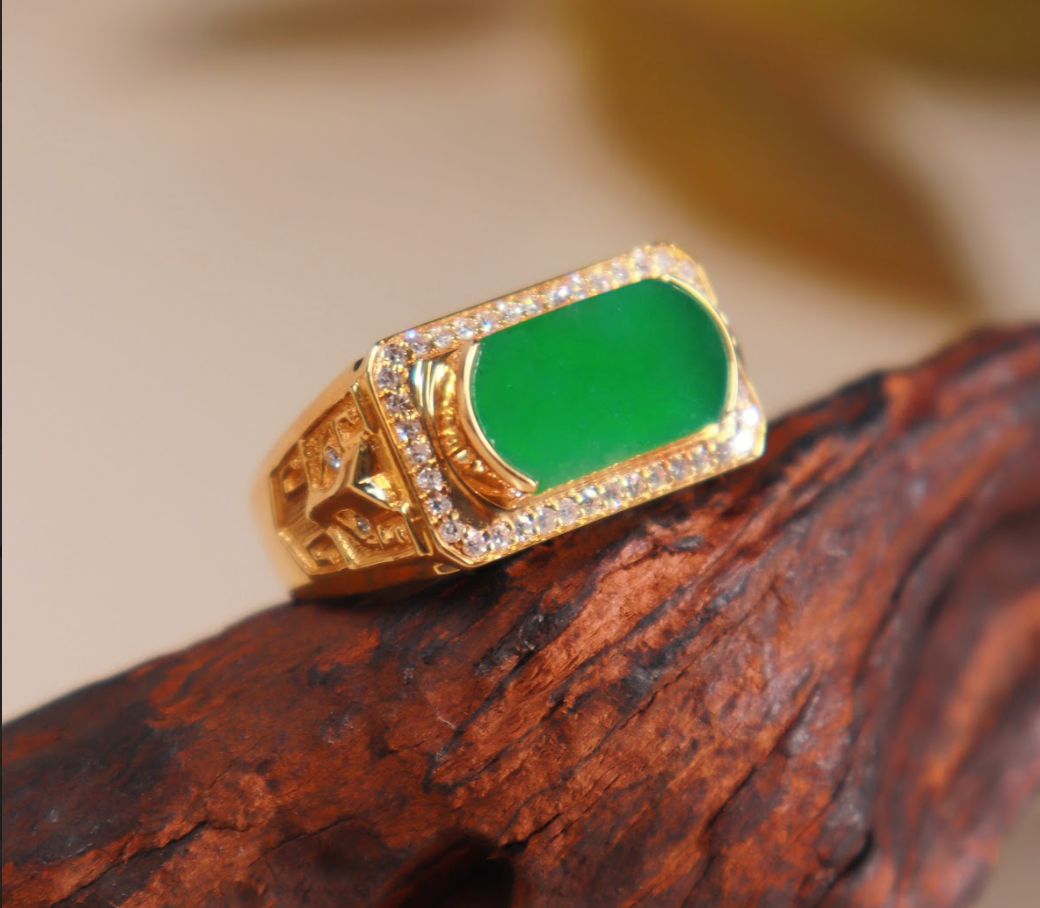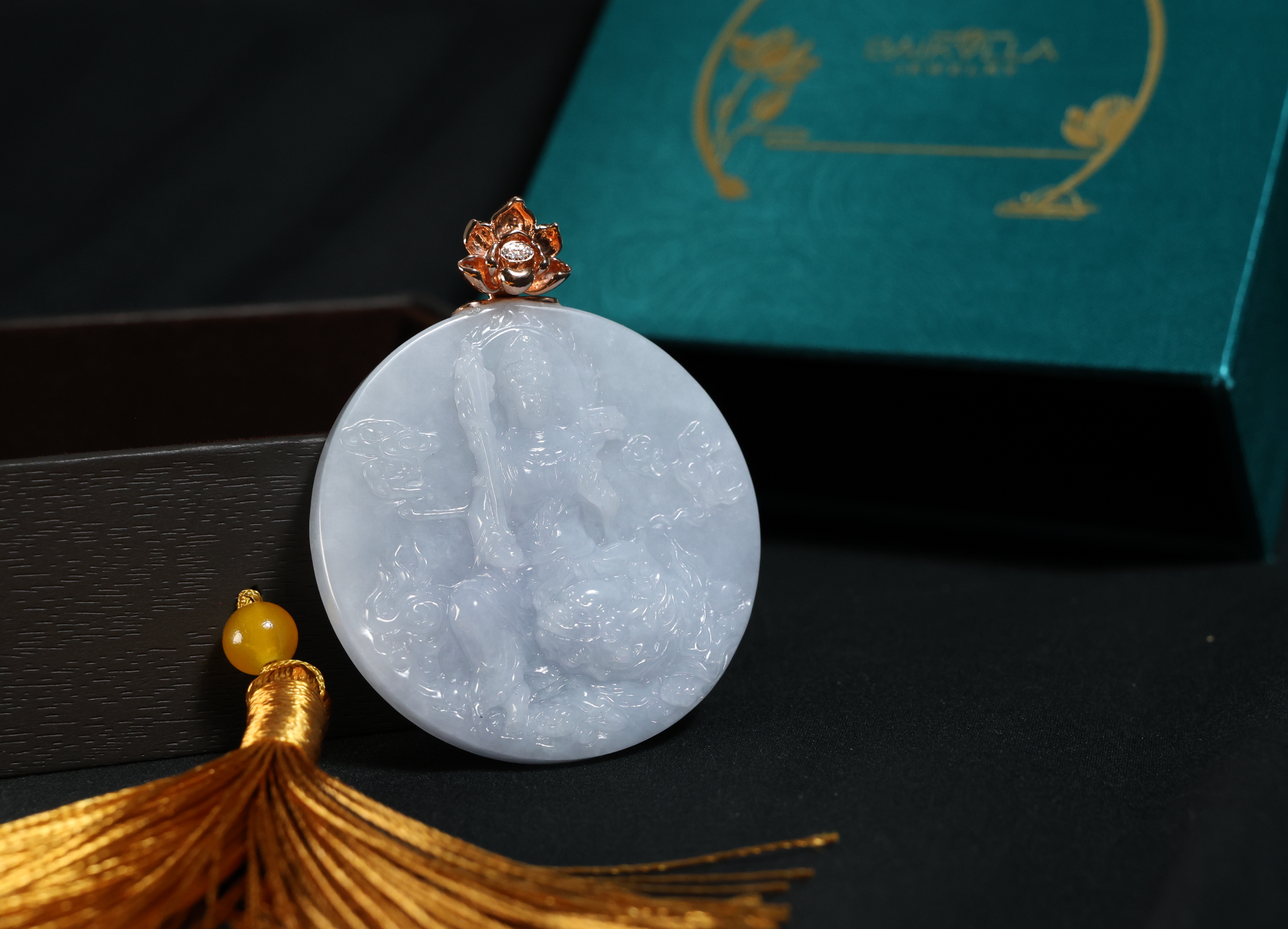What Is Imperial Jade?
Jade has been highly cherished and valued in Asian culture for many years, not only for its timeless and evident beauty but also for the symbolism and meaning it carries. Fei Cui, also called Imperial Jade, is the most valuable Jade you will find, is greatly known for its vibrant emerald green hue and high level of translucency. Its sparkly green color manifests its beautiful depth and is said to glow.
Understandably, this rare form of Jadeite is one of the most expensive gemstones. Its color, clarity, texture, thickness, and translucency determines its value. Let's read about how each factor makes Jade the royal gem that it is.
Color
The Chinese have admired Jade's green color since its discovery in Burma. Its color is the top contributing factor in its specialty. The Imperial Jade is hued in a rich emerald green color, which is measured by the brilliance, saturation, and purity of the stone.
Texture
The texture refers to the fineness of the crystal grains within the stone. It has a smooth and even texture that makes you want to touch it! The Jadeite's texture can be fine, medium, or coarse, depending on crystal hardness and size variations.

Clarity
The clarity of the imperial Jade is the existence and visual appearance of the internal inclusions. These inclusions could be the crystals of a foreign material or structural imperfections that may appear cloudy or whitish.
Translucency
Highly translucent Jade is a rarity. The translucency of a Jade is measured by what is called "shui fen" or moisture content. It is the degree to which the light can penetrate the stone. The more translucent the Jade is, the more valuable it is. Jade that is cut eggshell thin is translucent because it is thin enough for light to pass through.
Thickness
Many people have the mistaken impression that the value of the Jade cabochon lies in the height of the dome of the cabochon. Its thickness should be proportionate to its size to ensure the strength of the Jade and should not be eggshell thin.
Type A-Jade
Type A-jade is often the untreated Jade, and this term also applies to the Jadeite, which has been polished and sometimes covered in colorless wax. The wax conceals the near surface cracks and enhances the surface lustre. However, it is not a permanent treatment.
Type B-Jade
B-Jade refers to the Jade of low-quality color and translucency, which has been bleached in acids to remove impurities, then filled with synthetic raisins to make it harder. This treatment is damaging to the stone and is difficult to detect.
Type C-Jade
The dyed material of Jade is known as type C-Jade. It is often pale and dyed in green or lilac. Many pieces of Jadeite jade are both dyed and bleached and often filled with raisins resulting in B+C Jade.
Size & Weight
The Jade size is commonly expressed in millimeters. The value of beads, cabochon, and bangle bracelets increases in size and all other quality factors. With the high quality imperial Jade, minor differences in size can make a huge difference in value. Whereas with nephrite, larger sizes do not raise the value in most cases.
What Is The Difference Between Jade And Jadeite?
The traditionally called Jade is, in fact, two distinct and separate minerals such as Jadeite and nephrite. The chemical composition, level of hardness, and density of these two minerals are different from each other. Even the crystal structures are different. The Jadeite comes mainly from Burma, while most of the classic Jade from China is nephrite. Imperial Jade is the rarest and most valuable variety of green Jadeite. Imperial Jade is green colored by traces of chromium. Nephrite is still quite affordable, but Jade is generally expensive. The other jade stone varieties are actually 'rocks' composed of partly Jadeite or nephrite, along with various other minerals, such as kosmochlor (maw-sit-sit), albite, or omphacite.
The Jade At Baikalla Jewelry

Every piece of Jade that is used in our jewelry is guaranteed to be from origin Burma and of certifiable jadeite grade in type A. That is 100% natural and free from any form of chemical treatment. Find our latest collection of real jade bracelets and genuine jade earrings available at our online store.



Comments
The expensive jade stone is imeperial green jadeite,,,!!! They a apple green , but its depends the kinds of jade…!!!
I am looking for someone who can give me a good appraisal on a pin my mother left me. I know she received it around 1950 and surrounded with white water pearls. I can post a picture.. Patricia
Hi, can you please help me identify the value of one Jade statue? Or please refer me to somebody that can help me ( I got pictures)